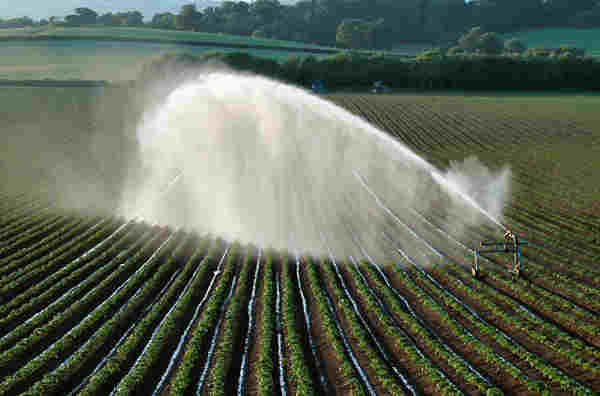This is the second post in Food Tank’s series on World Water Day, part of the United Nations International Year of Water Cooperation, which will profile top strategies for reducing water waste and water consumption. As part of supporting citizens’ livelihoods and wellbeing, governments and policymakers have a huge role to play in sustainable water use, especially when it comes to supporting water-saving solutions for farmers.
Farmers have been struggling to compete for access to water. In 2005, the U.S. Environmental Protection Agency reported that 36 percent of the freshwater used in the United States went to irrigation, but 41.5 percent was used in power plants. Cities and industries now pay more for water than farmers, and they also get higher returns on their water use. But governments and policymakers can find ways to support farmers who are trying to make the most of our water resources. Here are four attention-worthy strategies for policies that address water use in agriculture:
4: Reform government subsidies for water and electricity
Energy and water subsidies have a huge influence on the way farmers use water. Energy subsidy reform in the Indian state of Gujarat gave homes and non-farm businesses 24-hour access to water, but restricted farmers’ access to an 8-hour period. The ability to control the use of groundwater now allows the government to adjust water usage based on need, and has helped support new non-farm businesses, cut power subsidies for agriculture in half, and reduced groundwater overdraft.
3: Support small-scale, family farms
In the United States, agriculture subsidies disproportionately support large-scale agribusinesses over small-scale producers. However, 80 percent of agribusinesses produce corn for animal feed and ethanol, not food for people. This means that the family farmers producing food for consumers are also the ones most likely to lack support for managing drought or fluctuations in commodity prices. By changing government systems to better support family farmers, policymakers could improve farmers’ quality of life and encourage more sustainable water use.
2: Collect rainwater for municipal use and growing crops-—even in cities
Rainwater harvesting is an old idea with ever-increasing value. Modern-day systems increase water availability and crop yields, recharge groundwater supplies, and provide vital resources for growing cities. The Rainwater Catchment Project in China’s Gansu Province, on which the U.N. Environment Programme reported, provides drinking water for 1.3 million people, as well as irrigation for courtyard gardens and supplemental cash crops.
1: Indigenous- and smallholder-inspired research and development
Most systems aren’t “one size fits all,” but agricultural research and development programs usually take this approach to their work, ignoring the expertise of local smallholder farmers and indigenous peoples. These groups have valuable knowledge about local conditions and communities’ immediate needs. The success of organizations like World Neighbors, which works to adapt farming practices to different environments and cultures, shows how much collaboration with these people can improve results from new innovations and practices.
Everyone has an important role to play in reducing water waste, but the influence of governments and policymakers shouldn’t be ignored. The United Nations declared 2013 the International Year of Water Cooperation, and Food Tank will feature more water use innovations every day to celebrate World Water Day on March 22nd. Working together ensures that everyone has access to enough water!













